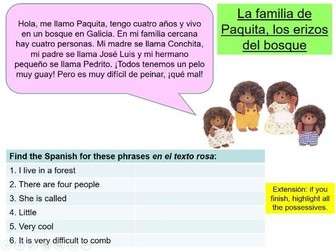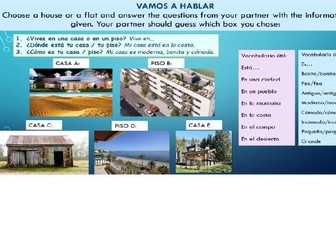
Viva 1 Spanish - 1.5 ¿Tienes mascotas? page 16
PowerPoint and worksheet to go with Viva 1 (Spanish) for year 7. 1.5 ¿Tienes mascotas? page 16
Objectives: to talk about pets and use colours with them. Introduction lesson to learn pets’ names, colours and “tengo”.
True or false game with phrases and animals’ photos. Speaking activity and listening from the textbook (answers included).

